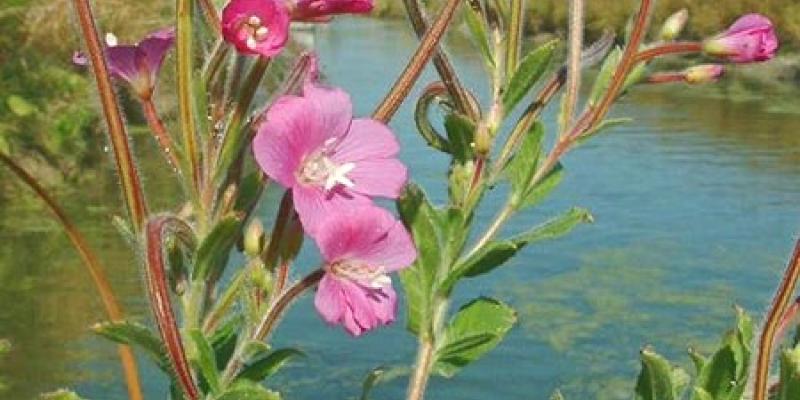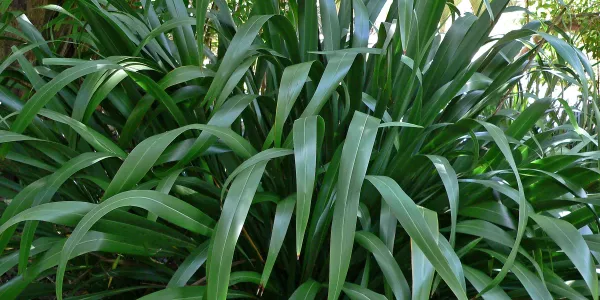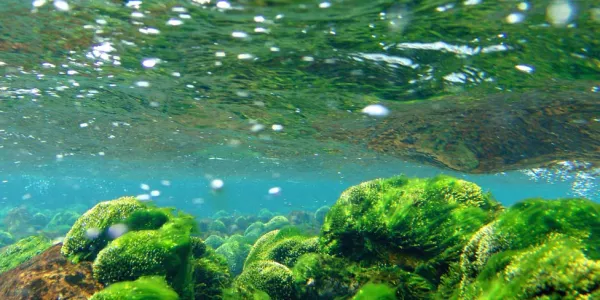Weeds of the Styx
Weeds, also called invasive plants or pest plants, dominate many parts of the Pūharakekenui (Styx) River. Only a very small proportion of introduced plants become invasive, but the ones that do have massive effects on the river and its ecosystems. This is because they have huge advantages here in New Zealand. Weeds usually have few or no natural enemy animals to graze on them and keep them under control. They also tend to grow faster than native species, a huge competitive advantage. This leads to invasive plants outgrowing, smothering and then wiping out native plant communities. Waterways are especially vulnerable to this process, which ends with the formation of a new ecosystem dominated by introduced species. The rampant growth of waterway weeds can also clog channels. This leads to a higher water level, increased flooding, blocked drainage infrastructure, and less habitat for native fish and invertebrates.
Weeds in the Styx
Reports consistently highlight the huge number of weeds in the Styx. Over 60 introduced species have been noted, with huge effects for the ecological, biodiversity, and cultural values of the Styx. Outside of a few patches of remnant marshland, there are almost no areas in the Styx that are naturally dominated by native species. This has been the case for a long time, large scale conversion of the Styx into farmland having begun in the 1860s. As a result, weeds play a significant and sometimes complex role in shaping the Styx environment. The impacts of weeds differ between the riparian weeds affecting the riverbanks and marshes, and the submerged weeds affecting the in-stream environment (although these groups often overlap, with some emergent plants able to dominate shallow waterways).
Riparian weeds grow along the riverbank and emerge out of the marshes, with other similar invasive species slightly further up the banks causing problems for riverside plantings and reserves. This category includes many of our most aggressive invaders, such as grey willow, beggars tick, and purple loosestrife. Weeds are the greatest threat our high-value marshlands have, with their takeover threatening biodiversity values and management goals. A major cultural assessment also highlighted the lack of native species along river margins as a key area to improve. These weeds are so devastating because of how completely they wipe out the many low and slow growing native species that are vital parts of marshlands in the Styx, and then build completely different habitats. For example, native sedge marshes are vulnerable to invasion by much taller willows, which permanently convert the area into willow forest. Many rare insect species in the Styx require open habitats, so the invasion of taller weeds drives them out, while supporting fewer other species. Wetlands are also vital habitats for native birds, especially for their feeding and nesting. This makes weed control vital to protect native riverside and marshland ecosystems in the catchment.
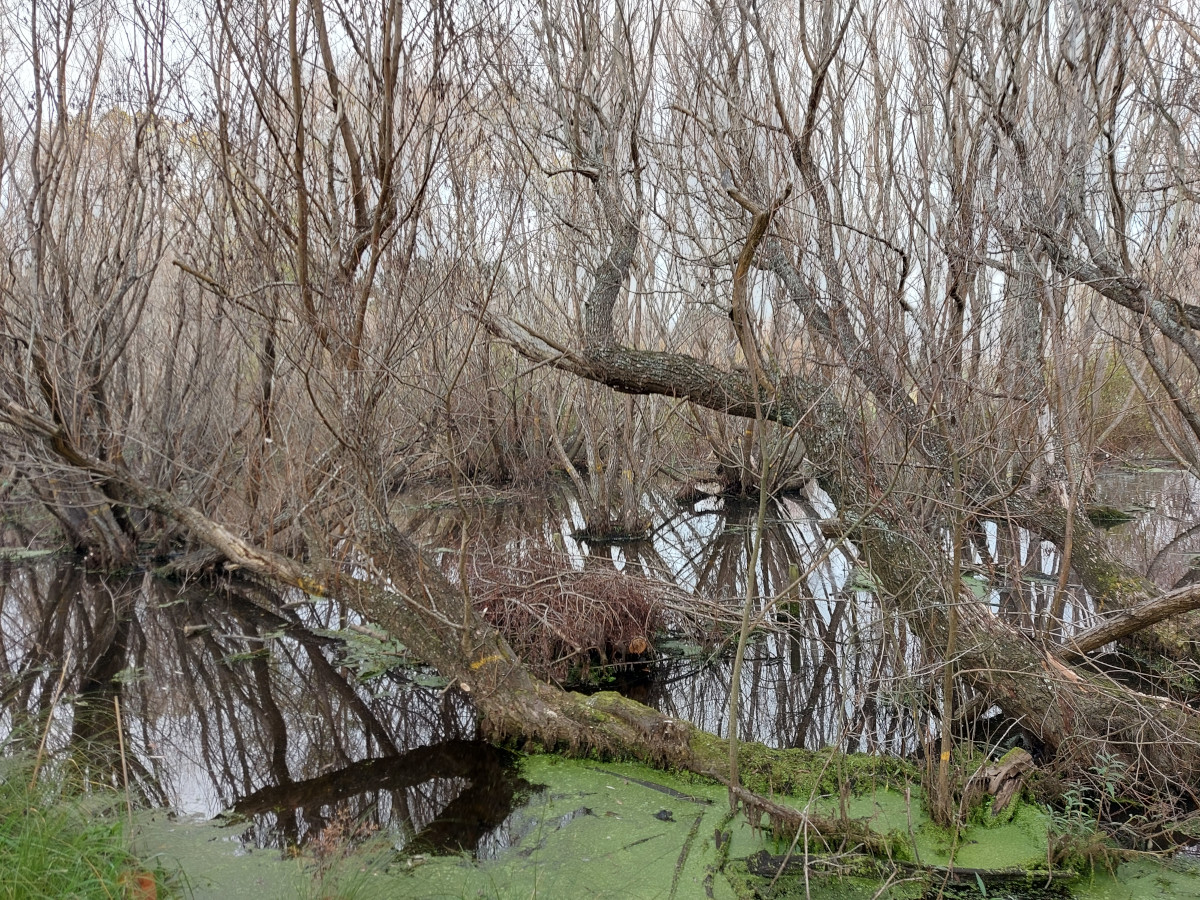
A willow grove that has taken over river bend by the Christine Heremaia Field Centre
Waterway weeds, or invasive aquatic macrophytes, have a similarly massive impact. They are so prevalent and hold back so much water that after they are cleared out, the water level in the Styx can drop 20-30cm. The Styx River community used to be defined by algae and some native macrophyte species, but now is largely dominated by aggressive aquatic macrophytes, most of them introduced. This is driven by the high levels of light, and by increasing sediment in the river, which (up to a point) creates more space for macrophytes to root. Their thick growth slows the river and traps extra water, leading to increased flood risks and more sediment deposition. Much like on land, the introduced species grow faster than native plants and threaten to wipe them out. Only a few spots in the river are left that support native chickweed (Montia fontana subsp. fontana), and two native species of Myriophyllum are now heavily threatened by introduced Potamogeton crispus. Weeds also create problems for native animals by reducing habitat diversity. Thick weeds and mud do support some species, especially snails (and often in huge numbers), but losing the wide range of habitats as the weeds cover everything makes species diversity drop massively. For example, exposed gravels are important for fish spawning and home to several invertebrate species but are easily covered over by weeds. This problem is especially pressing in key habitats like springs, where colder water creates refuges for rare native species that were driven out of the main streams when the loss of canopy vegetation made the water too hot. Reducing macrophyte density with more riverside plantings and encouraging native macrophytes to replace introduced species can help create a wider range of habitats to maintain and improve diversity in the Styx.
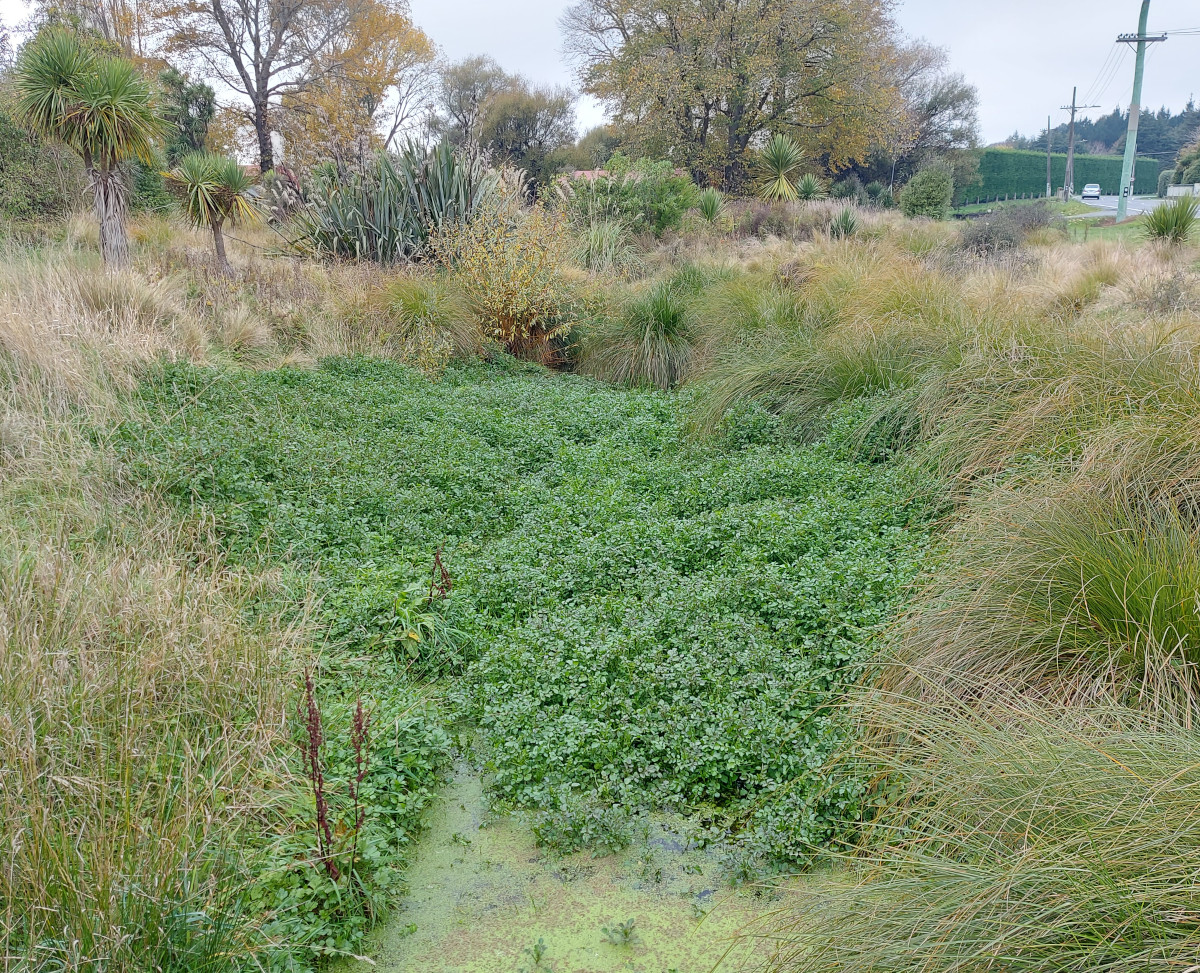
Emergent macrophytes, mainly watercress, completely fill this channel that feeds into the Styx River at Te Waoku Kahikatea
One complication is that weeds have been such an important part of the Styx ecosystem for so long that in some cases it may be difficult to remove them without causing unexpected flow-on effects. Environments in this situation are termed novel ecosystems, where a mix native and introduced species coexist in stable new dynamics. This is especially common with aquatic weeds, where introduced species often provide much the same resources for animals as native species. Some uncommon native animals in the Styx may only survive because a mix of native and introduced species meets their specific needs. An improperly restored native environment might lose that ‘magic ingredient’ and be unable to support these uncommon species. Many of our riparian weeds are more clear-cut problems, but one exception are very large and old trees that provide roosts for some native birds and possibly bats. For example, pines near the estuary are important for cormorants. In the long term, old native trees will do this job better, but all the native forest around the Styx is still too young. These situations are generally edge cases, and the dominance of weeds in the Styx still causes more damage than it prevents. But good management involves accounting for these edge cases when planning restorations, such as identifying important trees. The same approach may be manageable in the water. By identifying native species which only occur in a few degraded locations, we can identify species which might rely on novel habitats and determine areas which need to be restored with more caution and experimentation.
Weed Control
Controlling weeds allows native forests to regenerate naturally, keeps restoration plantings alive, can restore healthy river flow, and support a more diverse animal community. Since many weeds are opportunistic invaders of degraded environments, restoring the environment through planting native species is often the best long-term strategy for weed control. For example, a restored canopy reduces the density of the common weed monkeyflower (Erythranthe guttata) but around 85%, making it no longer a problem. Dedicated weed control programmes are best for helping restoration plantings to establish, or to control the small group of key weeds that can cause severe impacts on their own.
For dedicated weed control programmes, having specific goals and plans are crucial. This is because weeds are abundant and rapidly regrow after control efforts, whereas control resources are limited. There is also the risk that controlling some mild weeds will create opportunities for worse weeds to expand their invasions. Effective goals are usually to remediate a specific site or supress key species. Key sites include areas where replanting has or will happen, or high value environments like sedge wetlands that have high native species diversity and offer many ecosystem services. Species-focused weed control plans usually target the highest risk species, like forest-invading Old Man’s Beard, or new invaders which can still be easily eradicated. For any approach, multiple follow-ups are usually required as weeds attempt to regrow.
As well as work around our restoration plantings, the Styx Living Laboratory Trust is carrying out targeted weed control on grey willow (Sinex cinerea), bringing seven hectares of willows under control each year for five years. This target species was chosen because it can form a closed canopy that permanently convert native habitats into willow forest. We are also assisting the Christchurch City Council with controlling old man’s beard (Clematis vitalba) a vine which is capable of strangling entire native forests but is so far limited to only a few infestations along drains in the catchment.
Getting Involved
There are a number of ways to get involved in keeping weeds under control in the Pūharakekenui. Getting involved in community planting days helps us build the self-sustaining native forest the river needs to keep weed density down. If you have a creek on your property, consider planting tussocks or other native plants along its banks. This will reduce the density of water weeds, keeping your creek clearer and decreasing the chance of it flooding in heavy rain. If you are a landowner whose property runs along the Pūharakekenui, Ka Pūtahi, or Smacks Creek, and would like to work with the Trust to plant your riparian margins with native plants, please reach out to Community Coordinator Jackie Howard at jackie@thestyx.nz.
When you’re in and around the Styx, keeping an eye out for new invaders is also important. Controlling weeds once they get away is difficult and expensive, so stopping new weeds is extremely important. These change over time, but at the time of writing great willowherb (Epilobium hirsutum) has recently arrived in the Pūharakekenui and the Ministry for Primary Industries (MPI) is attempting to eradicate it. Any you see should be reported to MPI and documented with an app like iNaturalist. Beggars Tick (Bidens frondosa) is a rampant weed being actively controlled by the Christchurch City Council – if you spot any, pull them out or report the patch to the Council.
Related Research
Aquatic Plants in Christchurch River Systems
Author: W. van den Ende, T. Partridge
Publication date: 01/08/2002
Research Funding: Royal Society Teacher Fellowships
https://www.thestyx.org.nz/sites/default/files/research/aquatic_plantsps.pdf
A Biological Survey of the Styx River Catchment
Author: The Laboratory Division of the Christchurch Drainage Board
Publication date: 01/03/1989
Research Funding: Other Styx Catchment related documents & Reports
https://www.thestyx.org.nz/sites/default/files/research/styxriverbiologicalsurveymar1989.pdf
Weed Plan for Styx Mill Conservation Reserve - September 2003
Author: Kate McCoombs
Publication date: 01/12/2003
Research Funding: Christchurch City Council
A Botanical Assessment and Weed Plan for the Styx River Banks between Spencerville Rd and Earlham St
Author: Kate McCoombs
Publication date: 01/11/2003
Research Funding: Christchurch City Council
Weeds at Brooklands Lagoon
Author: K McCoombs
Publication date: 01/05/1999
Research Funding: Christchurch City Council
https://www.thestyx.org.nz/sites/default/files/research/ccceco9909_report19991.pdf
Biodiversity values and Management Recommendations for the Styx River Mouth Reserve, Lower Waimakariri Regional Park
Author: P Grove
Publication date: 01/07/2009
Research Funding: Other Styx Catchment related documents & Reports
Redwood Spring, Ecological Values, Safety Analysis, Community Flow Monitoring and Long-Term Protection
Author: Jens Zollhoefer
Publication date:01/10/2006
Research Funding: Christchurch City Council
https://www.thestyx.org.nz/sites/default/files/research/redwood_spring_3final_final_.pdf
Styx River, Purakaunui, Natural Asset Condition Report
Author: Manfred von Tippelskirch and Peter Hayward
Publication date: 01/05/2005
Research Funding: Christchurch City Council
A consideration of aspects of the Styx River ecology, and its implications for whole-river management
Author: Mark Taylor, Alistair Suren, B.K. Sorrell
Publication date: 01/05/2000
Research Funding: Other Styx Catchment related documents & Reports
https://www.thestyx.org.nz/sites/default/files/research/styxriverecologymay2000.pdf


